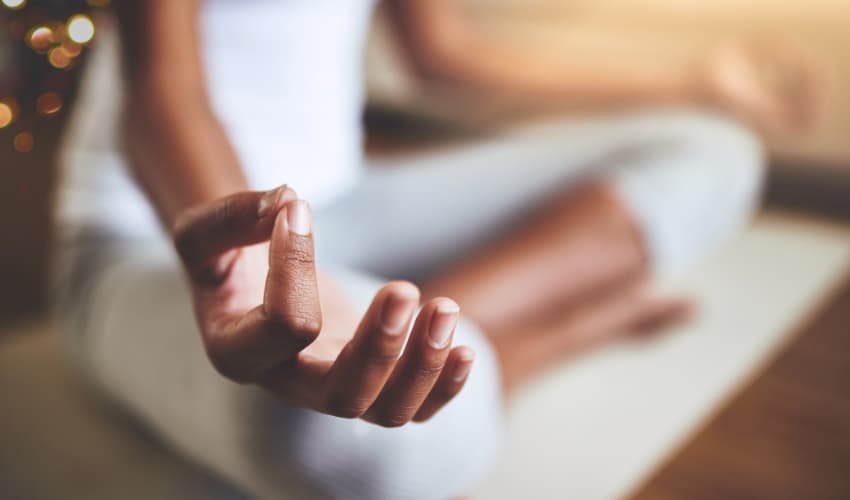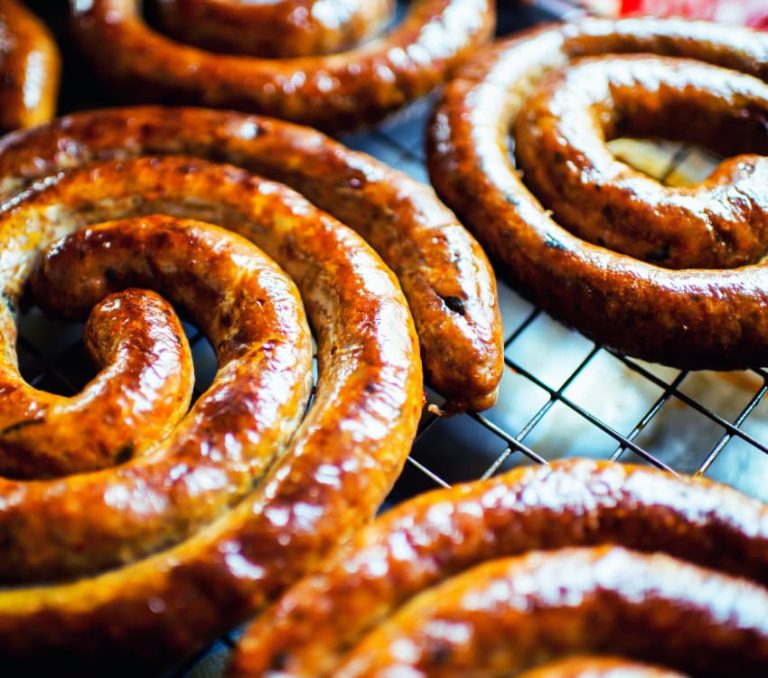In today’s fast-paced and increasingly digital world, cultivating mindfulness to counteract stress and maintain mental well-being has become more critical than ever. Mindfulness involves cultivating a non-judgmental awareness of the present moment, enabling individuals to develop self-awareness, emotional regulation, and resilience. By practising mindfulness, people can experience increased focus, reduced stress, and heightened overall well-being.
Vipassana meditation is an ancient and time-tested technique practised for thousands of years, particularly within the Buddhist tradition. This form of meditation focuses on developing mindfulness through observing one’s breath, bodily sensations, and mental processes. As a practice, Vipassana meditation encourages individuals to cultivate a deep and sustained awareness of their inner experiences, fostering mental clarity, self-understanding, and emotional balance.
We explore various Vipassana meditation techniques designed to help you master the art of mindfulness. These techniques, which include Anapana Sati (mindfulness of breathing), Vipassana body scanning, and Metta Bhavana (cultivating loving-kindness), provide a practical and systematic approach to developing mindfulness daily. Incorporating these techniques into your meditation practice can enhance your ability to navigate life’s challenges with greater ease, mental clarity, and emotional resilience.
The Foundations of Vipassana Meditation
“Vipassana” is derived from the Pali language and can be translated as “seeing things as they are.” Vipassana meditation, also known as insight meditation, has its roots in the ancient teachings of the Buddha, who lived around 2,500 years ago. This form of meditation has been practised for centuries within the Theravada Buddhist tradition and was popularised in the modern era by meditation masters such as Mahasi Sayadaw, S. N. Goenka, and Joseph Goldstein.
Over the years, Vipassana meditation has evolved, and various schools and lineages have developed their approaches to the practice. However, the core teachings and principles remain consistent across these different traditions, emphasising the cultivation of mindfulness, self-awareness, and insight into the true nature of reality.
Core principles of Vipassana practice
Vipassana meditation is built on several key principles that form the foundation of the practice. These principles include:
- Mindfulness: Cultivating a non-judgmental awareness of the present moment, including one’s thoughts, emotions, and bodily sensations.
- Impermanence: Recognizing that all experiences and sensations are transient, continually changing, and ultimately impermanent.
- Non-attachment: Developing an attitude of non-attachment and non-reactivity towards one’s inner experiences, recognising that clinging to or resisting them can lead to suffering.
- Equanimity: Maintaining a balanced and even-minded state of awareness, regardless of the pleasant or unpleasant nature of the experiences that arise during meditation.
The role of mindfulness in Vipassana meditation
Mindfulness plays a central role in Vipassana meditation, as it is the foundation upon which the practice is built. Through the cultivation of mindfulness, practitioners learn to observe their thoughts, emotions, and bodily sensations without judgment or reactivity. This heightened awareness allows them to gain insight into the true nature of their experiences and develop a deeper understanding of themselves and the world around them.
By practising mindfulness in the context of Vipassana meditation, individuals can develop the mental clarity and focus necessary to navigate life’s challenges with greater ease and resilience. Furthermore, mindfulness is a powerful tool for reducing stress, enhancing emotional regulation, and fostering overall mental well-being.
Essential Vipassana Meditation Techniques
Anapana Sati: Mindfulness of breathing
The importance of breath awareness
Breath awareness is a foundational practice in Vipassana meditation, as it helps develop concentration and mindfulness. By focusing on the breath, individuals can anchor their attention in the present moment, cultivating a sense of stability and calm. Furthermore, breath awareness can be a gateway to more profound insights into the mind’s nature and sensations’ impermanence.
Technique and steps for practising Anapana Sati
To practice Anapana Sati, follow these steps:
a. Find a comfortable, quiet place to sit, maintaining an upright posture with your spine straight and your head balanced.
b. Close your eyes gently and take a few deep breaths to relax your body and mind.
c. Gradually bring your attention to the natural flow of your breath, focusing on the sensation of the air as it enters and leaves your nostrils.
d. If your mind wanders, gently bring your focus back to your breath without judgment or frustration.
e. Continue to observe your breath during your meditation session, maintaining an open and non-judgmental awareness.
Vipassana body scanning: Systematic mindfulness of sensations
The role of body scanning in cultivating mindfulness
Body scanning is used in Vipassana meditation to develop mindfulness of bodily sensations. By systematically observing sensations throughout the body, practitioners can develop greater self-awareness and insight into the impermanent nature of experiences. This practice helps to cultivate equanimity and non-attachment, allowing individuals to navigate life’s challenges with greater resilience and clarity.
Technique and steps for practising Vipassana body scanning
To practice Vipassana body scanning, follow these steps:
a. Begin by sitting comfortably, upright with your eyes closed.
b. Start at the top of your head and gradually move your attention downward through your body, observing any sensations that arise without judgment or reaction.
c. As you scan your body, maintain an attitude of curiosity and openness, allowing sensations to come and go without trying to change or control them.
d. Continue to scan your entire body, moving from head to toe and back up again.
e. If you encounter any areas of tension or discomfort, acknowledge these sensations without reacting to them, and then gently return your focus to the scanning process.
Metta Bhavana: Cultivating loving-kindness
The significance of loving-kindness in mindfulness practice
Metta Bhavana, or loving-kindness meditation, is an essential technique in Vipassana meditation that helps to cultivate compassion and empathy for oneself and others. This practice involves directing well-wishes and positive intentions toward oneself, loved ones, neutral individuals, and even difficult people. By developing an attitude of loving-kindness, practitioners can foster greater emotional balance, reduce negative mental states, and promote a sense of interconnectedness with others.
Technique and steps for practising Metta Bhavana
To practice Metta Bhavana, follow these steps:
a. Sit in a comfortable, upright position with your eyes closed.
b. Begin by directing loving-kindness towards yourself, silently repeating phrases such as “May I be happy, may I be healthy, may I be safe, may I be at ease.”
c. Gradually expand your circle of loving-kindness to include loved ones, friends, acquaintances, neutral individuals, and even those with whom you may have difficulties.
d. As you recite these phrases, try to generate genuine warmth, compassion, and goodwill towards each.
Tips for Incorporating Vipassana Techniques into Daily Life
Establishing a regular meditation routine
Consistency:
Commit to practice meditation daily, even if it’s just for a few minutes. A consistent routine will help you develop and maintain mindfulness skills more effectively.
Timing:
Find a time of day that works best for you, whether in the morning, during lunch, or before bedtime. Choose a time when you can be fully present and undisturbed.
Space:
Create a designated meditation space in your home or office that is quiet, comfortable, and free from distractions. This will help you establish a sense of ritual and commitment to your practice.
Duration:
Start with short sessions and gradually increase the duration of your meditation as you become more comfortable with the practice. Aim for at least 10-20 minutes daily, but remember that even a few minutes of focused meditation can be beneficial.
Adapting Vipassana techniques for various situations
Mini-meditations:
If you find yourself with a few spare moments during the day, take the opportunity to practice a brief Anapana Sati or body scanning meditation. These mini-meditations can help you maintain mindfulness throughout the day and remind you to stay present.
Mindful breaks:
Incorporate short mindful breaks into your daily routine, such as taking a few deep breaths or practising a quick body scan during work or while waiting in line. These mindful moments can help you reset and refocus your attention.
Walking meditation:
Adapt the principles of Vipassana meditation to walking by focusing on the sensations in your feet as they touch the ground. This can be a refreshing way to practice mindfulness while engaging in physical activity.
Mindfulness exercises for stress reduction and mental clarity
Mindful breathing:
Whenever you feel stressed or overwhelmed, focus on your breath for a few moments. This simple mindfulness exercise can help you regain mental clarity and reduce stress.
Body awareness:
Practice tuning into your body by noticing any areas of tension or discomfort. Acknowledge these sensations without judgment or reaction, then gently redirect your focus to your breath or another anchor point.
Mindful listening:
Engage in mindful listening by entirely focusing on the sounds around you, whether it’s the hum of an air conditioner, the rustle of leaves, or the sound of your breath. This practice can help you develop greater concentration and focus and a deeper appreciation for the present moment.
Overcoming Common Challenges in Vipassana Meditation Practice
Dealing with distractions and a wandering mind
Acknowledge distractions:
When you notice your mind has wandered or become distracted, acknowledge the distraction without judgment or frustration.
Gently return to your focus:
Once you have acknowledged the distraction, gently bring your attention back to your breath, bodily sensations, or whatever the focus of your meditation is.
Embrace the process:
Understand that distractions are a natural part of the meditation process. You strengthen your mindfulness skills when you bring your attention back to your focus.
Navigating difficult emotions and sensations
Observe without judgment:
When difficult emotions or sensations arise during meditation, try to observe them without judgment or reaction. Remember that all experiences are impermanent and will pass with time.
Practice self-compassion:
If you struggle with difficult emotions, offer yourself kindness and understanding, acknowledging that it’s normal to experience challenges during meditation.
Seek support:
If you find it difficult to navigate challenging emotions alone, consider seeking guidance from a meditation teacher or therapist who can provide personalised support and advice.
Cultivating patience and persistence in your practice
Set realistic expectations:
Understand that progress in meditation may be gradual and nonlinear. Be patient with yourself and recognise that growth may come in small, subtle ways.
Embrace the journey:
Rather than focusing solely on the end goal, embrace the journey of self-discovery and personal growth that Vipassana meditation offers.
Stay committed:
Persistence is vital when it comes to meditation practice. Stay committed to your routine, even when it feels challenging or uncomfortable, and trust that your efforts will yield positive results.
The Scientific Basis for the Benefits of Vipassana Meditation Techniques
Neuroplasticity refers to the brain’s ability to change its structure and function in response to experiences and learning. This capacity for change allows the brain to adapt and grow throughout an individual’s lifetime. Research has shown that regular meditation practice, including Vipassana techniques, can significantly change the brain’s structure and function. These changes can enhance cognitive abilities, emotional regulation, and mental well-being.
Studies have identified several key brain areas that change as a result of meditation practice, including the prefrontal cortex (involved in executive functions and decision-making), the hippocampus (associated with learning and memory), and the amygdala (involved in processing emotions).
Vipassana techniques on mental health and well-being
Studies have demonstrated that Vipassana meditation techniques can lead to significant reductions in symptoms of anxiety and depression, helping individuals to cultivate greater emotional balance and resilience. Vipassana meditation can improve cognitive abilities such as attention, memory, and problem-solving, resulting in better mental clarity and focus.
Regular practice of Vipassana techniques has been linked to greater emotional intelligence and the ability to regulate emotions more effectively. This allows individuals to navigate life’s challenges with more significant serenity.
Connection between mindfulness and stress reduction
Mindfulness practices, including Vipassana meditation, can help to regulate the body’s stress response by activating the parasympathetic nervous system, which promotes relaxation and recovery. By cultivating a non-judgmental awareness of thoughts, emotions, and sensations, Vipassana techniques can help individuals to disengage from negative thought patterns and better manage stress.
Consistent practice of Vipassana meditation has led to lasting changes in the brain and physiology, resulting in a greater capacity for stress reduction and resilience over time.
Additional Resources for Mastering Vipassana Meditation Techniques
Books
“The Art of Living: Vipassana Meditation” by S.N. Goenka: This foundational book introduces Vipassana meditation, its principles, and techniques, as taught by renowned meditation teacher S.N. Goenka.
“Mindfulness in Plain English” by Bhante Henepola Gunaratana: This classic guide provides clear and straightforward instructions for practising mindfulness meditation, including Vipassana techniques.
“The Miracle of Mindfulness: An Introduction to the Practice of Meditation” by Thich Nhat Hanh: In this influential book, Zen master Thich Nhat Hanh offers practical guidance for incorporating mindfulness into daily life, including Vipassana meditation techniques.
Online
Online courses, guided meditations, and mobile apps
Dhamma.org: The official website of the Vipassana meditation tradition, as taught by S.N. Goenka, offers resources, including a directory of Vipassana meditation centres worldwide, as well as information about upcoming courses and retreats.
Insight Timer: This popular meditation app features a vast library of guided meditations, including Vipassana techniques, mindfulness courses, music, and talks by renowned meditation teachers.
10% Happier: This mindfulness app, based on the bestselling book by Dan Harris, offers guided meditations, courses, and practical advice for incorporating mindfulness and Vipassana techniques into daily life.
Retreats and workshops
Vipassana Meditation Centers: Vipassana meditation centres worldwide offer 10-day silent retreats, providing an immersive experience for individuals to learn and deepen their practice of Vipassana techniques. Visit Dhamma.org to find a centre near you.
Local meditation groups and workshops: Many cities and towns have local meditation groups that offer workshops and classes on Vipassana meditation techniques. Check local listings or search online to find a group in your area.
Mindful Vipassana Meditation Retreat: Aleenta Retreat Chiang Mai offers a comprehensive Vipassana meditation retreat that combines the practice of mindfulness with a luxurious wellness experience. Located in Chiang Mai, Thailand, this retreat provides personalised guidance on Vipassana techniques, mindfulness workshops, daily meditation sessions, rejuvenating spa treatments, healthy meals, and comfortable accommodations.
Mindfulness-based workshops and courses: Several organisations offer seminars and courses that incorporate Vipassana meditation techniques, such as Mindfulness-Based Stress Reduction (MBSR) and Mindfulness-Based Cognitive Therapy (MBCT). These programs can provide valuable support and resources for mastering mindfulness and Vipassana techniques.
In Summary
These techniques are powerful tools for developing mindfulness, allowing individuals to cultivate greater self-awareness, emotional intelligence, and mental well-being. We encourage you to explore Vipassana meditation techniques and incorporate them into your daily life. Doing so can develop a personal mindfulness practice that supports your mental, emotional, and physical well-being. Whether you attend a Vipassana retreat, join a local meditation group, or practice independently, the key is to remain consistent and committed to your practice.
As you continue to develop and refine your mindfulness practice through Vipassana meditation techniques, you can experience a wide range of long-term benefits. These may include reduced stress and anxiety, improved emotional regulation, enhanced cognitive function, and greater well-being. Ultimately, mastering the art of mindfulness through Vipassana meditation techniques can lead to a more fulfilling, balanced, and resilient life.
Related Articles
- Vipassana Meditation: A Journey to Inner Peace
- Exploring Vipassana Meditations Physical and Mental Benefits
- Journey to Self-Discovery: An 8 Day Yoga Retreat with Essence of Ashram
- Exploring Vipassana Meditation Retreats in Chiang Mai
- Finding Balance: Holistic Health and Wellness Retreats in Thailand
Aleenta Retreat
Chiang Mai
Chiang Mai
189 Soi Ban Mai Lang Mo 18,
Suthep, Muang Chiang Mai District,
Chiang Mai 50200
T: +66 (0)52 090 333












